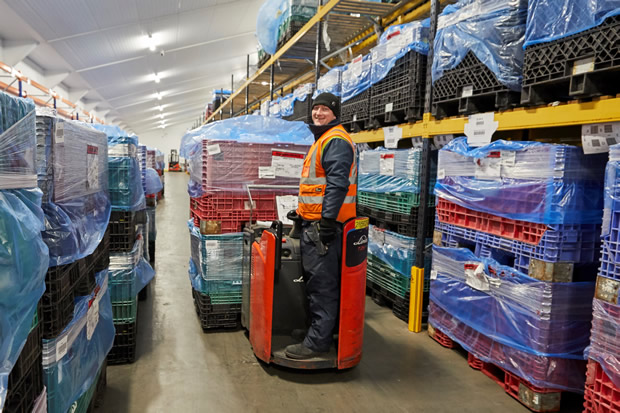Cold Chain Federation Chief Executive Shane Brennan said: “There is still a lot of flux in demand for fresh and frozen food from different sectors, and cold stores are still very full. We can expect this to continue until food service – restaurants, cafes, bars, catering – starts to resume. Like their customers, the businesses storing and distributing chilled and frozen food around the country are doing their best to prepare for the economic rollercoaster ahead.”

General:
- We are in the early stages of an economic rollercoaster, with reported predictions putting UK GDP down -35% by end of Q2, down -15% by the end of 2020, then recovery over the course of 2021. Government will be under pressure to pay back its huge Covid spend. Cold chain businesses need to be prepared and plan for what this means.
- There is still a lot of flux in demand for fresh and frozen food from different sectors, some will stick and become the ‘new normal’. Cold chain businesses need to consider customers’ and consumers’ changing demands, adapting and planning ahead wherever possible.
- Within the trend across all UK governments of a loosening of restrictions, cold chain businesses working across the UK nations need to be aware of differences in rules and policies between the governments.
Cold chain capacity: Cold storage occupancy rates are still very high, and are expected to remain very high for the near future. The cold chain has coped and adapted very successfully in a time of unprecedented and unpredictable change, and the Cold Chain Federation is having discussions with its members about preparation and resilience for the coming months and beyond.
Frozen and fresh food shopping:
- the weekly shop is back. There was around 20% uplift in grocery sales in April, with people shopping once a week rather than the 3 or 4 trips per week before.
- Sales of frozen ready meals have declined by 15%, but products for home cooking have gone up.
- The huge growth in home deliveries continues – supermarkets have doubled their capacity, more than 100% growth in older people using home delivery, and local shops are now doing 600,000+ home deliveries from pretty much a standing start.
Food service: The picture for food service over the coming months remains unclear. We can expect restaurant / take-away hybrid arrangements to grow.
Business impacts of the Track and Trace system:
- Businesses can play an important role in communicating some of the more confusing messages – for example someone with no symptoms who is asked to self-isolate for 14 days will need to do so even if they have a test that comes back negative
- Tracing close recent contacts: there is no official role for employers, the liaison is between the individual and the tracers. But employers can communicate about the process, provide support / info about testing, offer sick pay or annual leave for periods of isolation with evidence from the track and trace system. Employers should not provide personal contact details for an employee to another employee, but can make contact on their behalf.
- How will this dynamic actually work in practice in the cold chain? The Cold Chain Federation will be asking for regular reports from its members and discussing issues with Government as they present.
- Impacts on the cold chain workforce:
- As well as reducing transmission, maintaining social distancing in the workplace will be key to keeping down the numbers of employees needing to self-isolate as a ‘close recent contact’ if a colleague tests positive for Covid.
- Businesses need to plan carefully to minimise inaccuracies when the anticipated Test and Trace App is in use – for example if several employees leave their phones in lockers, close contact between people could be recorded that didn’t actually happen, and close contacts that did happen could be missed.
- Businesses should expect PHE to investigate any outbreaks, looking at risk assessments and the measures that have been put in place to protect employees, customers and the public.




Comments are closed.